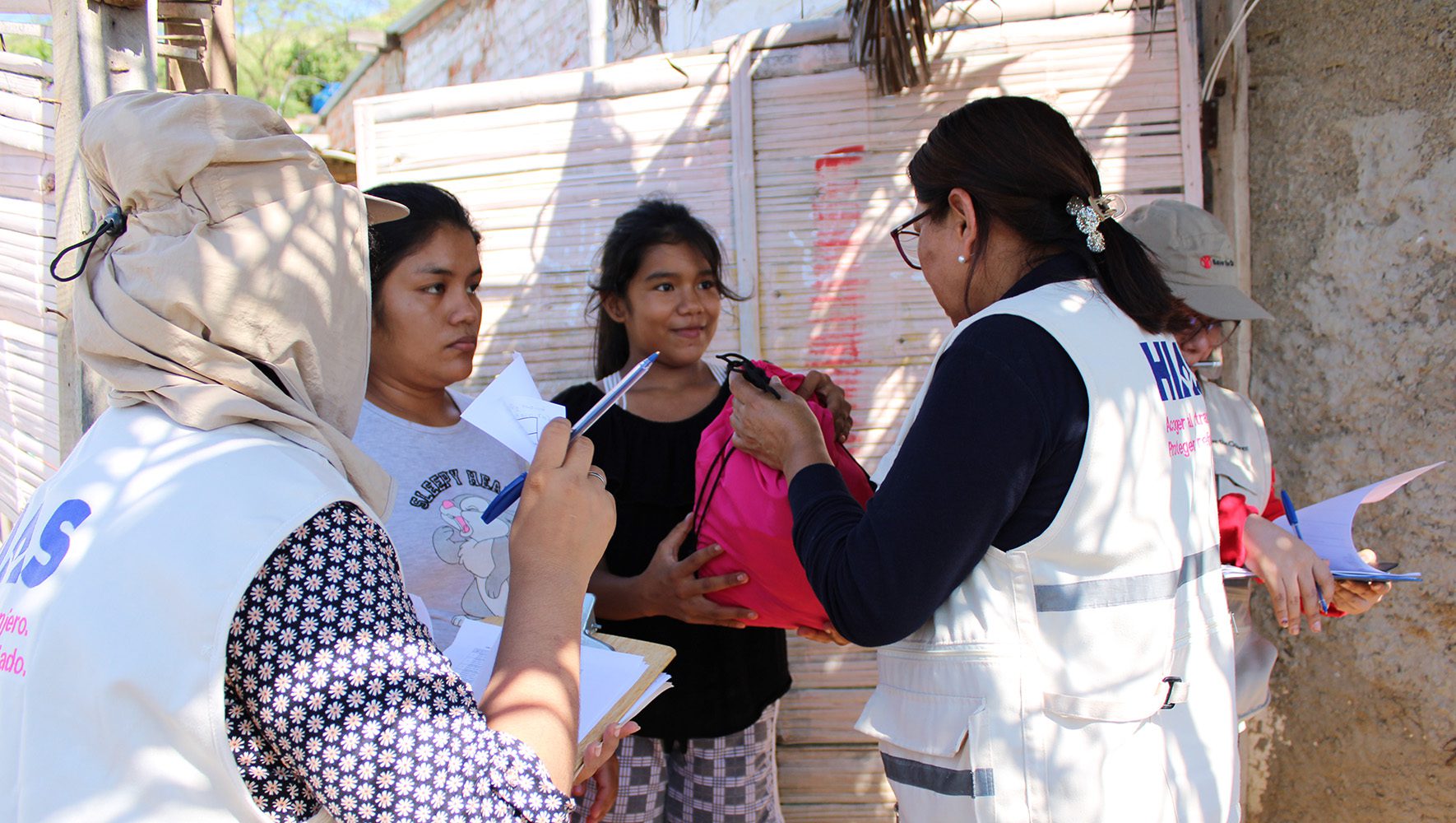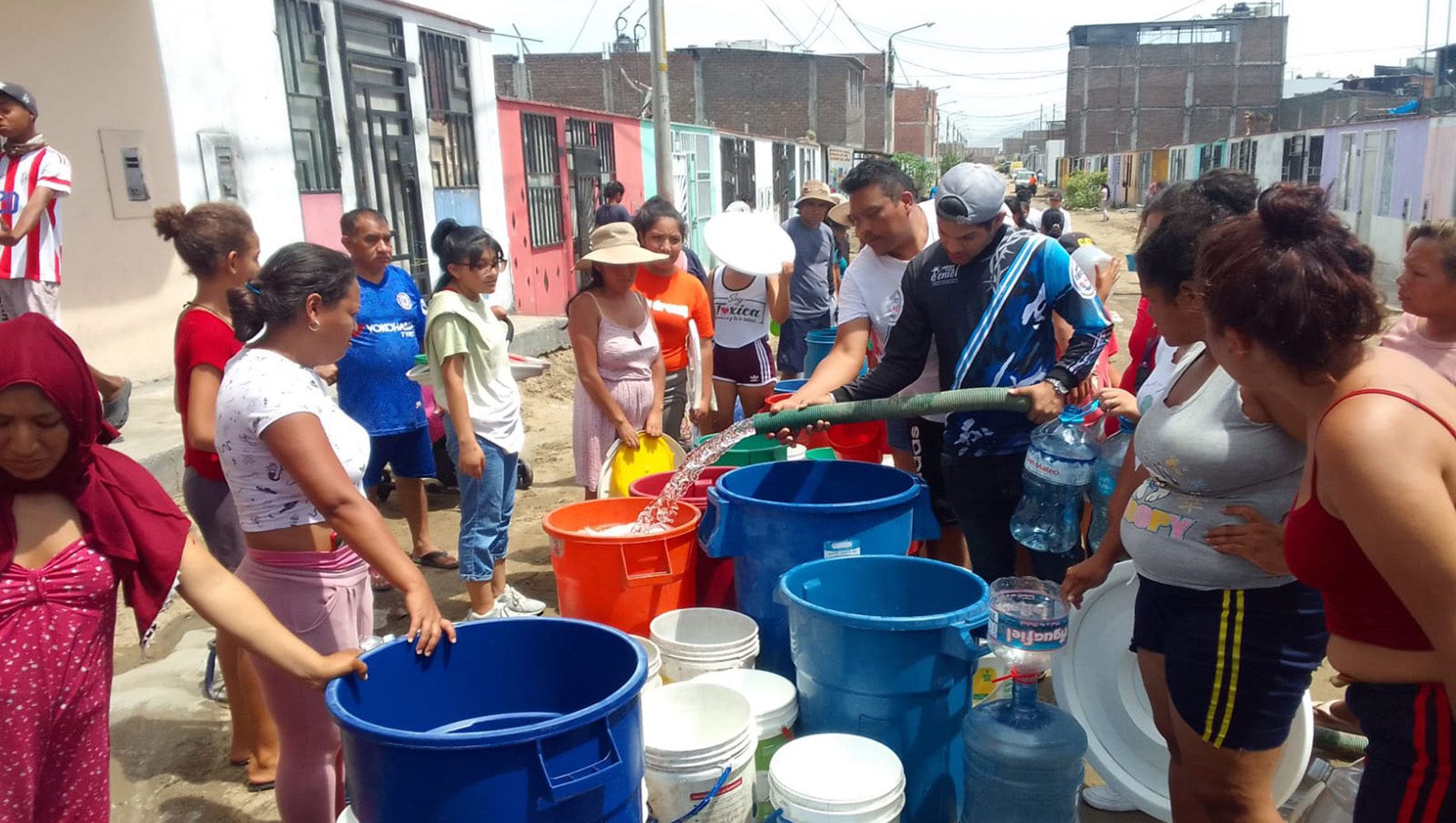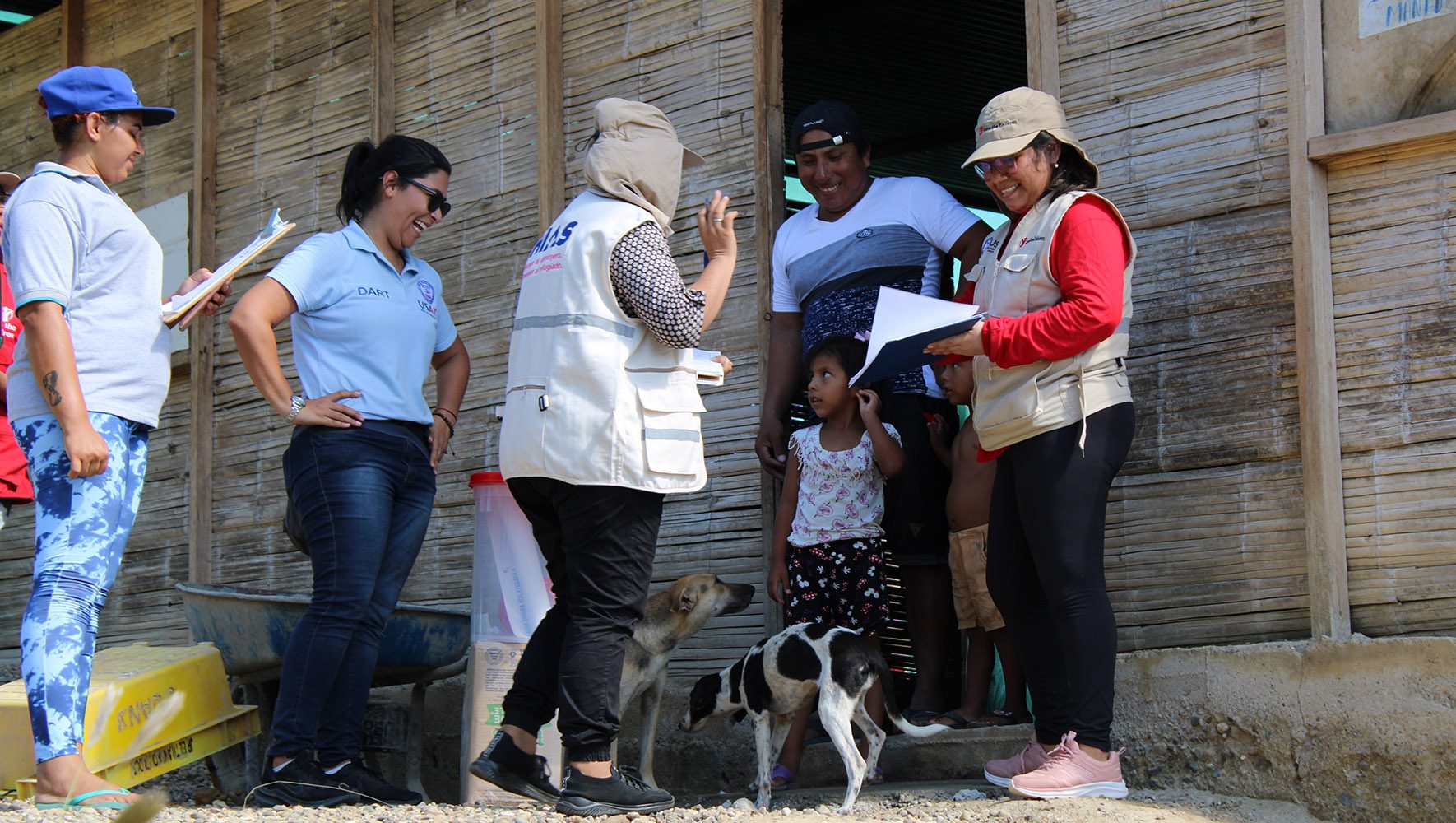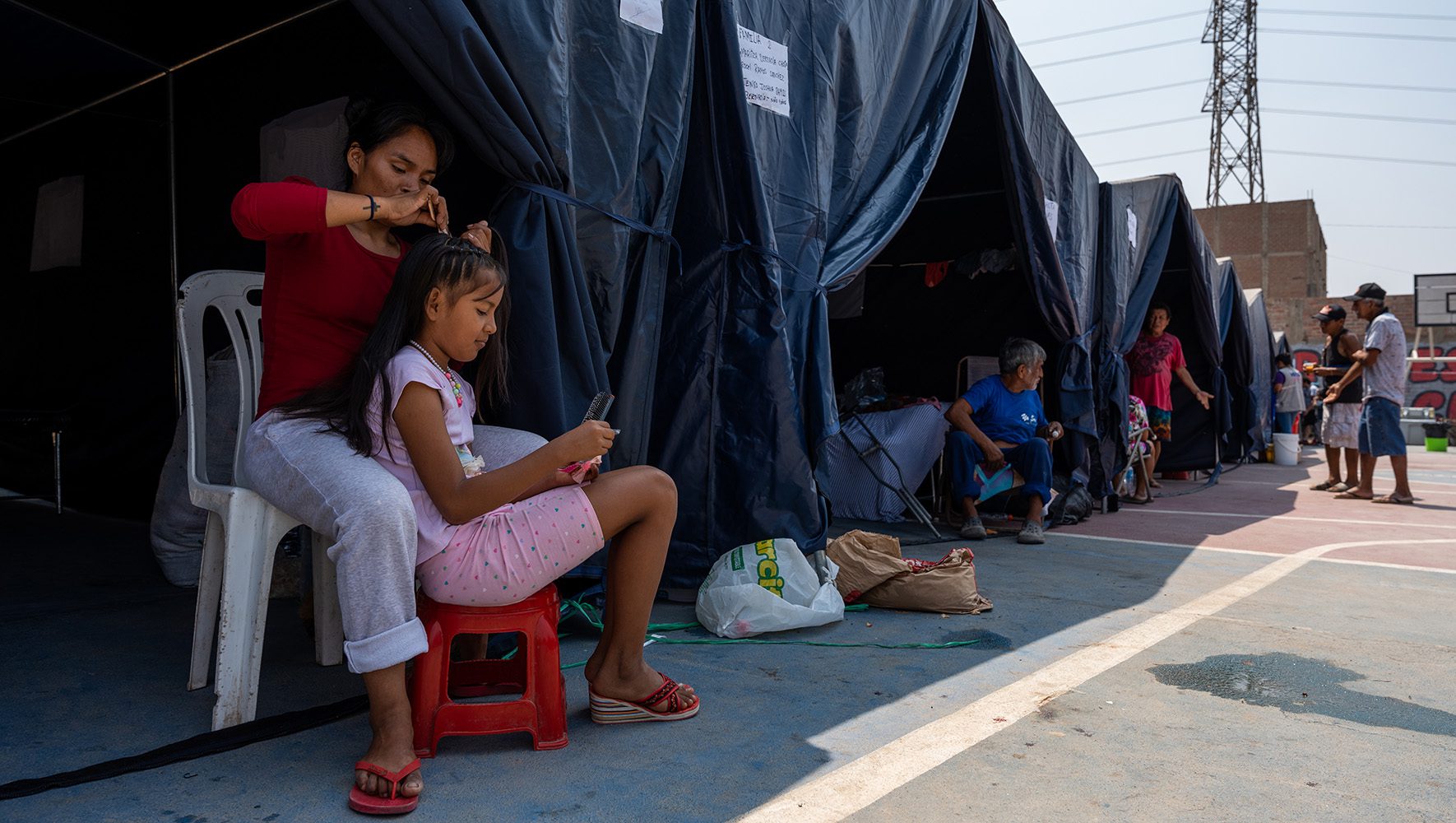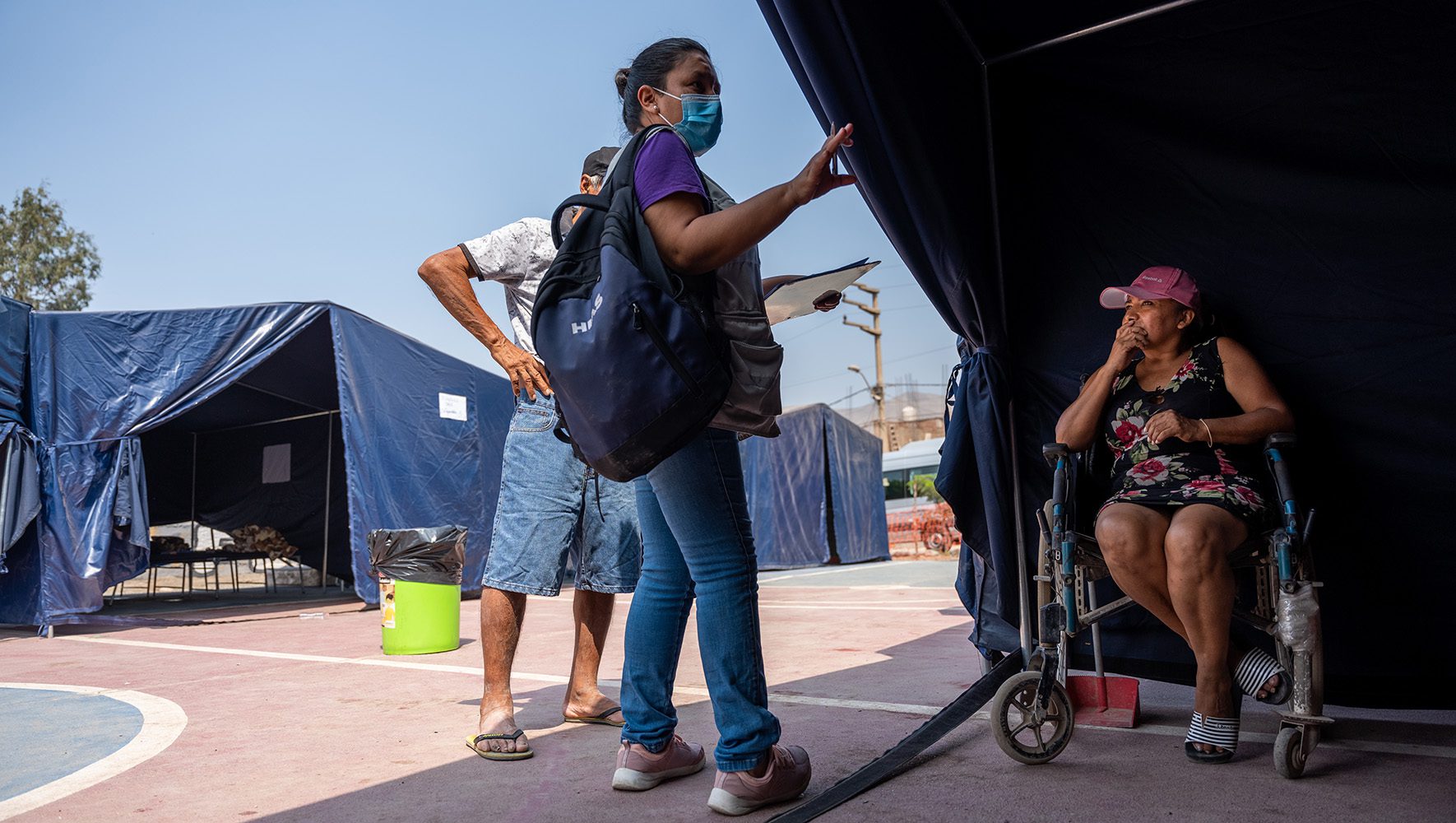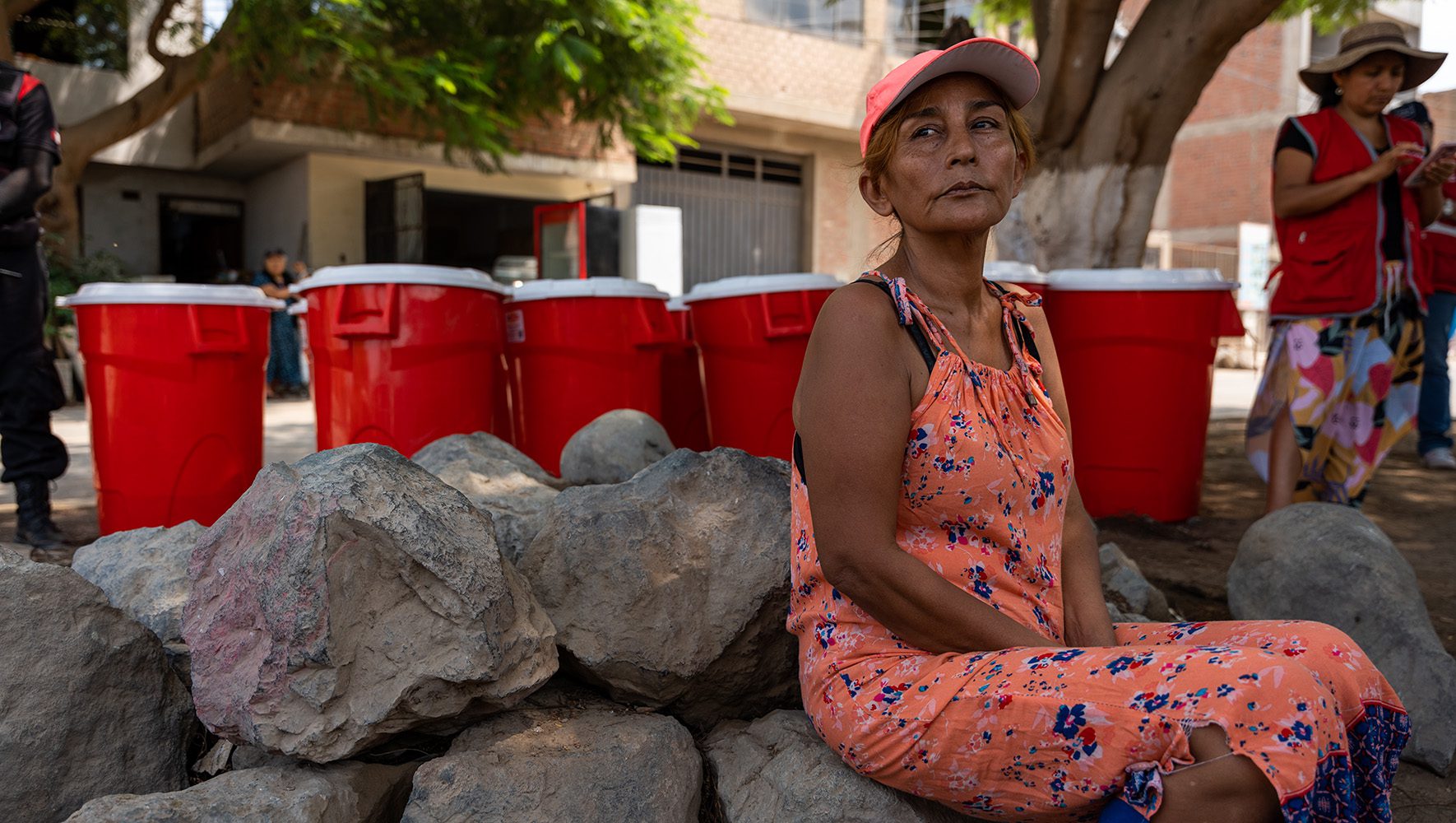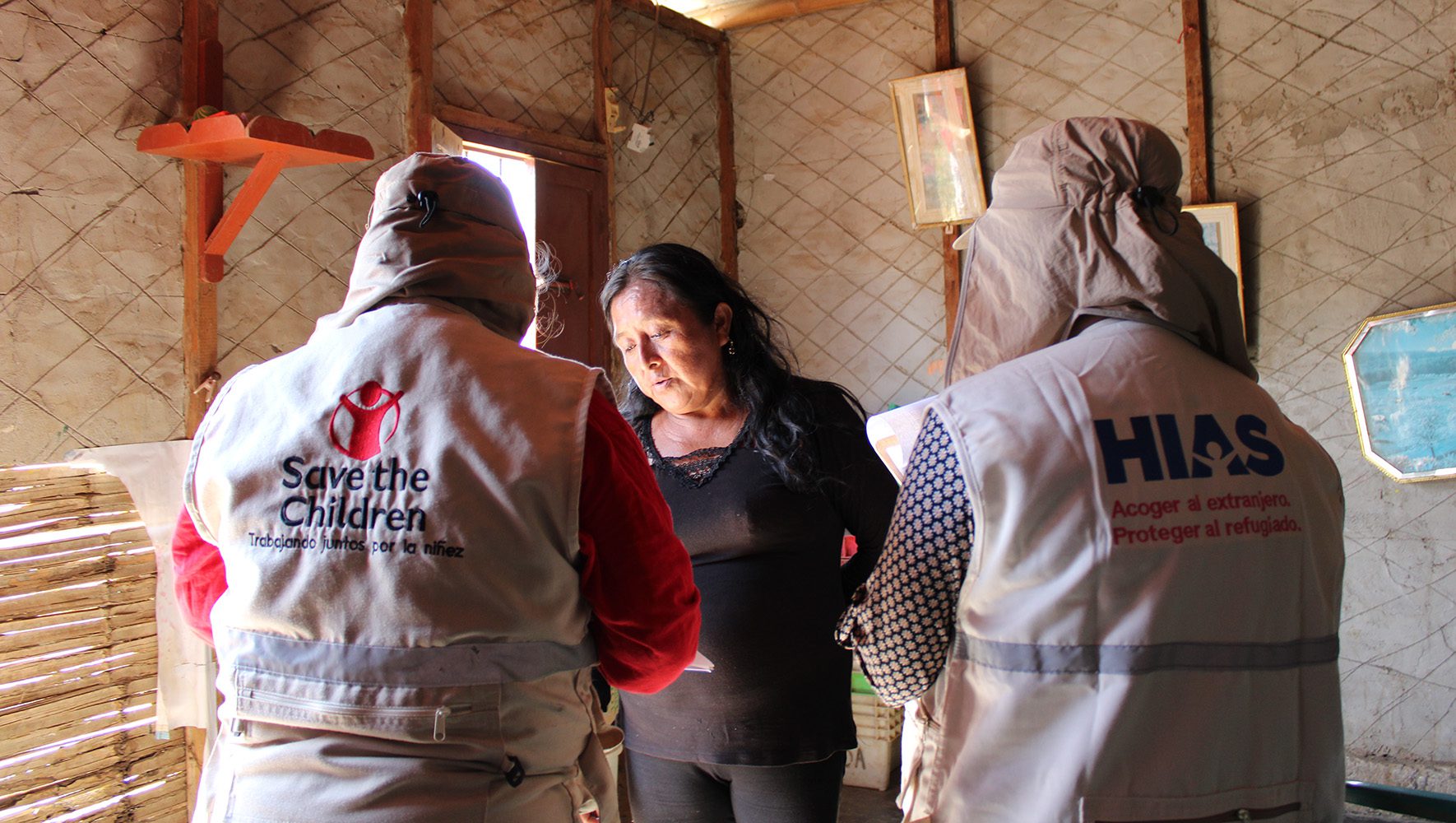Two months after Cyclone Yaku, an earthquake, and a rare climate phenomenon known as “El Niño Costero” that causes torrential rain converged in Peru to create heavy flooding and landslides, residents in the affected areas continue to struggle with the environmental crisis. The disaster has been especially acute in the northern coastal regions of Lambayeque, Piura, and Tumbes as well as the capital Peru, where thousands have lost their homes and have been displaced.
So far, 30,000 homes have been destroyed or remain uninhabitable, and at least 99 people have died. There are 247,000 people still in desperate need of assistance. “This is a particular type of emergency,” said Diego Gomez, HIAS’ Emergency Response Lead for Peru. “It’s not like a hurricane, earthquake, or tsunami that hits for one week and disappears. It has rained heavily on and off non-stop for months.”
One of the most pressing issues that people now face is displacement caused by a lack of housing and access to basic services such as water and electricity. Many people have lost their land and crops, creating a risk of food insecurity. The receding flood waters have also heightened the risk of water-borne and mosquito-spread diseases at a time when dengue fever is significantly on the rise.
“Several children we spoke to, alongside their parents, talked about their stomachs hurting and having diarrhea,” said Patrick Culver, HIAS’ Emergency Operations Manager. “There isn’t clear access to healthcare.”
"It’s not like a hurricane, earthquake, or tsunami that hits for one week and disappears. It has rained heavily on and off non-stop for months.”Diego Gomez HIAS’ emergency response lead for Peru
HIAS has been working on the ground with migrants and local populations impacted by the floods and landslides since the Peruvian government declared a state of emergency in March. Their needs are stark: 80% of migrants and refugees live in districts where floods and landslides have caused significant damage, resulting in the double displacement of certain populations. “The host communities and migrant communities in Peru are experiencing the same crisis. As migrants, knowing your legal rights, access to healthcare, to food and water, and shelters are critical,” said Culver.
Hygiene kits, drinking water, and water-resistant clothing items such as rain boots and jackets have been purchased for people in affected areas, and staff have been going door-to-door to provide direct assistance to rural populations in need. HIAS has provided cash-based interventions to vulnerable individuals, and is currently pursuing grant opportunities to expand this effort. HIAS Peru has also shared flood warning materials and weather forecasts on social media to help local populations prepare themselves for extreme conditions.
HIAS Peru has worked with partner organizations and government agencies in Lima, Trujillo, Chiclayo, and Tumbes to reach people in need of both urgent and longer-term assistance. “HIAS Peru’s advantage is that we were already in these communities and could more easily reach people. We already have programming and infrastructure in these areas,” Culver said.
